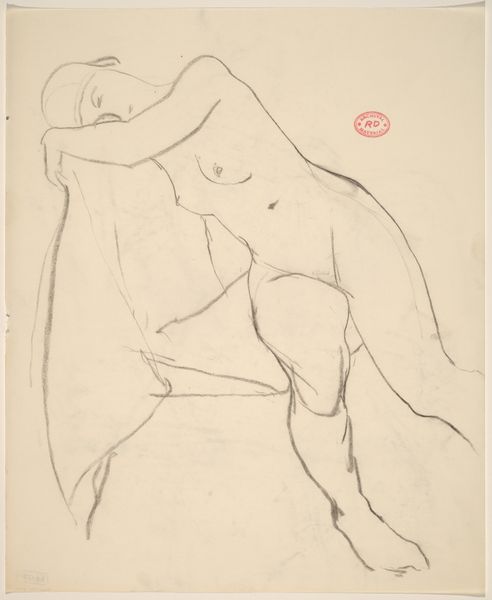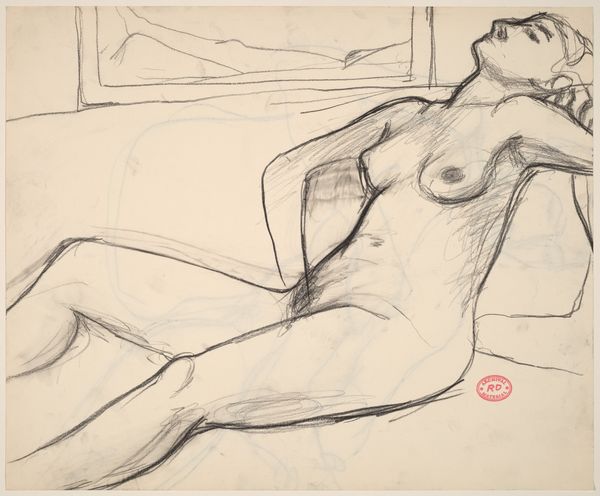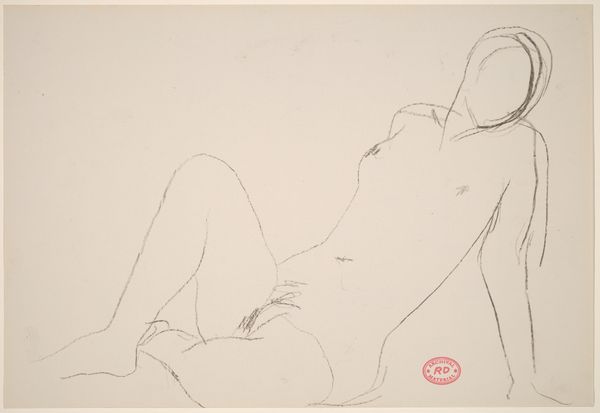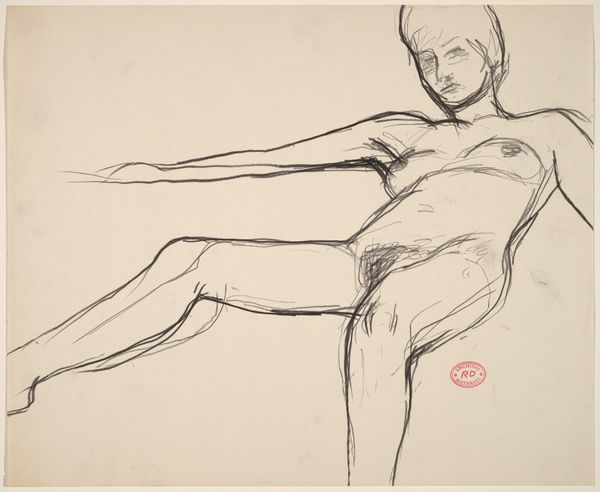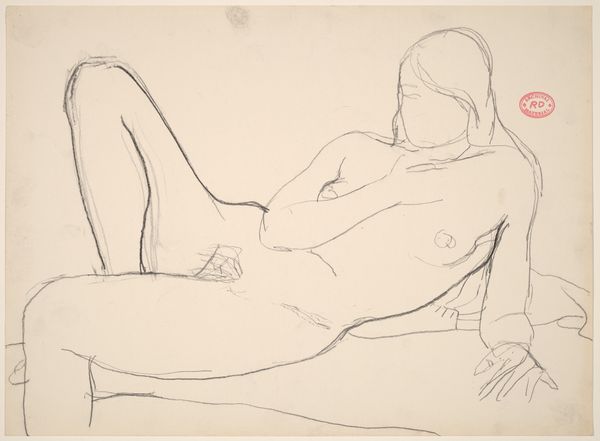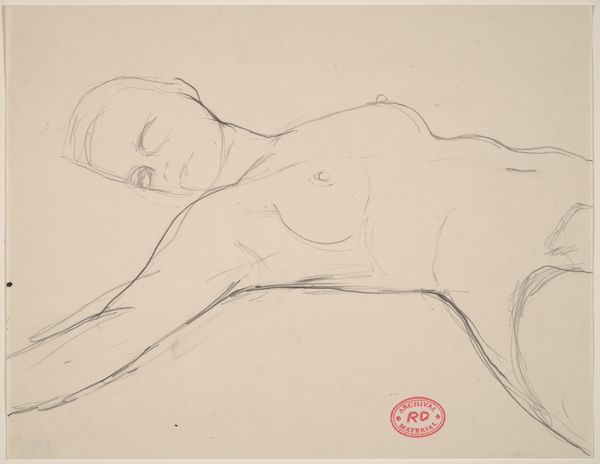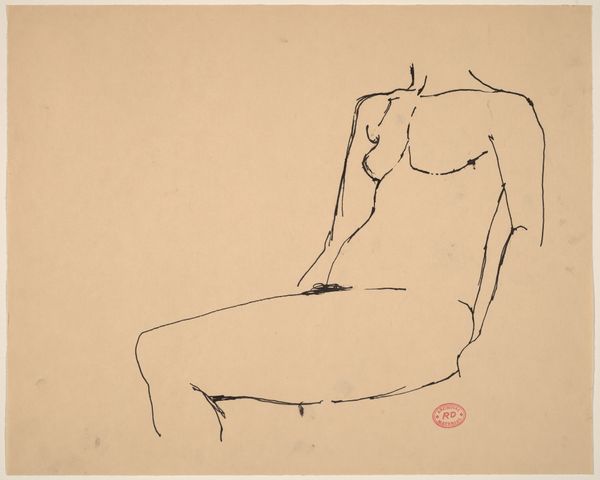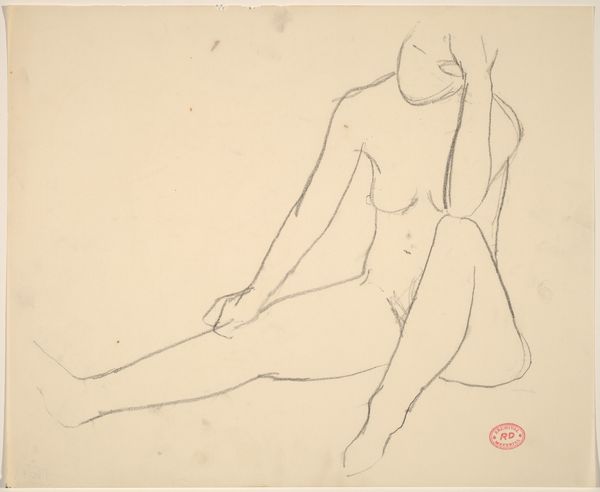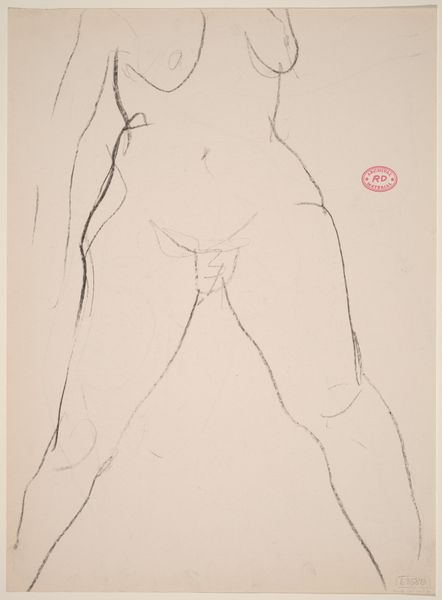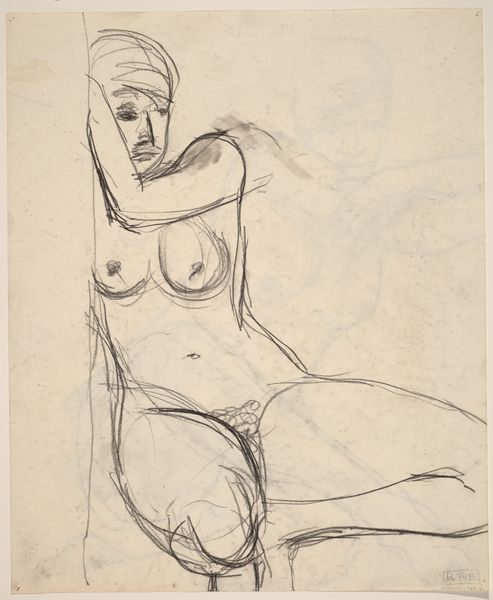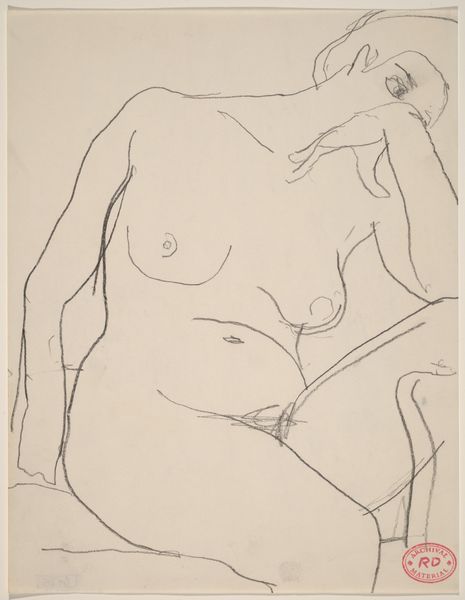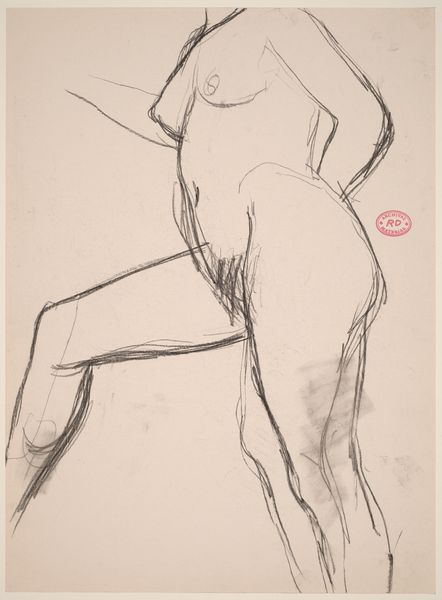![Untitled [female nude leaning back] by Richard Diebenkorn](/_next/image?url=https%3A%2F%2Fd2w8kbdekdi1gv.cloudfront.net%2FeyJidWNrZXQiOiAiYXJ0ZXJhLWltYWdlcy1idWNrZXQiLCAia2V5IjogImFydHdvcmtzL2I4ODQ5YzJhLTJmMDktNGM1Yy05NTU0LTkxZTBhY2Q4NTA2NC9iODg0OWMyYS0yZjA5LTRjNWMtOTU1NC05MWUwYWNkODUwNjRfZnVsbC5qcGciLCAiZWRpdHMiOiB7InJlc2l6ZSI6IHsid2lkdGgiOiAxOTIwLCAiaGVpZ2h0IjogMTkyMCwgImZpdCI6ICJpbnNpZGUifX19&w=3840&q=75)
drawing, pencil
#
drawing
#
figuration
#
bay-area-figurative-movement
#
pencil drawing
#
pencil
#
academic-art
#
nude
Dimensions: overall: 35.2 x 42.9 cm (13 7/8 x 16 7/8 in.)
Copyright: National Gallery of Art: CC0 1.0
Editor: This is an untitled nude drawing by Richard Diebenkorn, created sometime between 1955 and 1967, using pencil on paper. The pose seems relaxed, but I’m struck by the visible lines; they seem tentative, almost searching. What do you make of it? Curator: The visible pencil lines point to a crucial element: labor. This isn't a slick, idealized representation, but a record of the artist's process. Consider the accessibility of pencil and paper, their function as tools for both preliminary sketches and final works. Diebenkorn's choice elevates the sketch, typically seen as disposable, into a finished product. How does this material awareness challenge the traditional hierarchy between "high art" and everyday practice? Editor: That’s interesting. I hadn’t thought about the implications of using such common materials. Does that also speak to the accessibility, potentially, of the subject matter itself, moving away from idealized forms? Curator: Exactly. The nude form becomes less about unattainable beauty and more about the process of seeing, drawing, and rendering a body present in the studio. What can this tell us about who Diebenkorn expected the audience for this piece to be, and what assumptions was he making? Editor: I suppose he might have assumed an audience familiar with art making and perhaps the figure drawing tradition. I'm starting to think about this piece less as a straightforward representation and more as a document of artistic labor. Curator: Precisely. And thinking critically about art consumption encourages a more comprehensive interpretation of the artwork. I find that examining the history of how graphite and paper were sourced offers a compelling social and economic counter-narrative to typical aesthetic analyses. Editor: This definitely changes how I see Diebenkorn’s work. I’ll be paying a lot more attention to materials and process in future visits to galleries. Curator: It’s a rewarding perspective. Looking at art through the lens of production reveals so much about its relationship to culture.
Comments
No comments
Be the first to comment and join the conversation on the ultimate creative platform.
